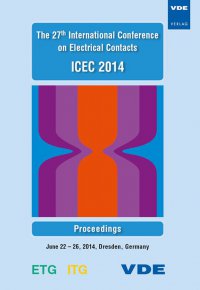From fretting to connector vibration tests: a “transfer function” approach to predict electrical contact resistance endurance
Conference: ICEC 2014 - The 27th International Conference on Electrical Contacts
06/22/2014 - 06/26/2014 at Dresden, Deutschland
Proceedings: ICEC 2014
Pages: 6Language: englishTyp: PDF
Personal VDE Members are entitled to a 10% discount on this title
Authors:
Fouvry, S.; Jedrzejczyk, P. (LTDS, CNRS UMR 5513, Ecole Centrale de Lyon, 36 Avenue Guy de Collongue, 69134 Ecully Cedex, France)
Chalandon, P.; Alquier, O. (PSA - Centre Technique, Velizy - Villacoublay, France)
Abstract:
The main requirement of materials used in electrical connectors is to allow low and stable electrical contact resistance (ECR) endurance. However, due to engine vibration, fretting wear damage can occur in the interface, reducing electrical conductivity. Different strategies can be considered to investigate the ECR endurance (e.g., Nc when DeltaR>DeltaRth (4mOmega)) of electrical contacts subject to fretting-vibration displacement. Materials studies usually involve well-instrumented fretting test experiments applying a controlled ?* contact displacement amplitude. This provides low-dispersion but non-representative connector results. By contrast, the connector industry prefers full connector vibration tests, fixing frequency and varying the ?* displacement amplitude of the connector box. This is closer to the real application, but the real contact displacement operating in the pin-clip interface remains unknown. Very little has been done to correlate fretting and vibration test procedures so as to be able to extrapolate materials research to real connector applications. The present study focuses on this aspect. Introducing an “ECR equivalent endurance” parameter, a Transfer Function (TF) linking both fretting and vibration amplitude, is expressed. Combining fretting and connector vibration experiments on both Au-Co and Sn coating structures, we show that connector vibration endurances can be approximated using basic fretting endurance data.


